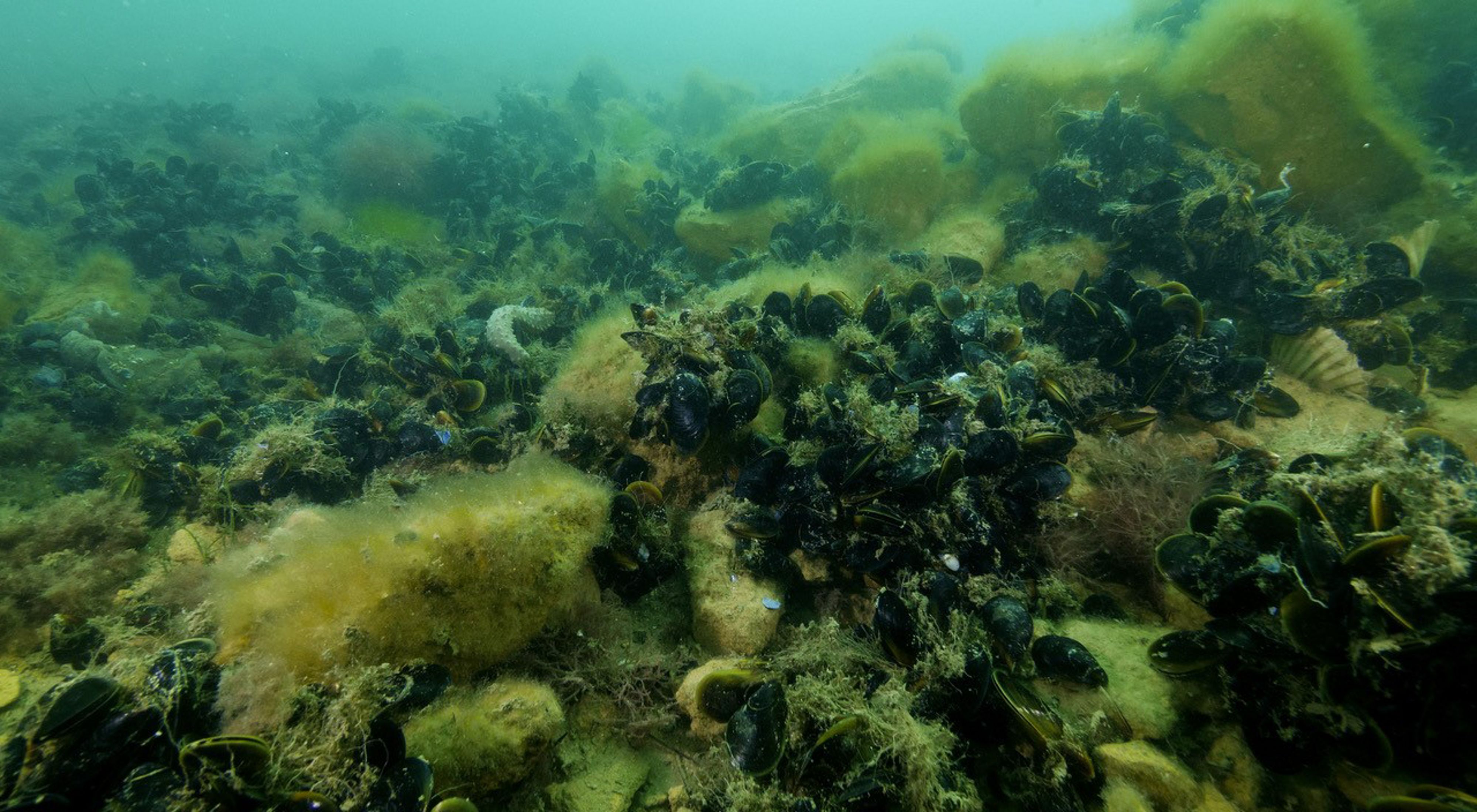Media Contacts
-
Laura Griffin
Currie Communications
Email: laura@curriecommunications.com.au
This week scuba divers are starting to spread 3.5 million young blue mussels and Australian flat oysters on reconstructed reefs at Geelong, Hobsons Bay and Dromana in Port Phillip Bay.
This seeding exercise is the final stage of rebuilding shellfish reefs for the benefit of the environment and local economy.
The Nature Conservancy is leading the Port Phillip Bay Shellfish Reef Restoration project to rebuild the near-extinct ecosystems.
Oceans Operations Manager, Simon Branigan, said reefs made up of mussels and oysters once covered 50 per cent of Port Phillip Bay’s seafloor, but historical over-harvesting, along with urban runoff and disease have destroyed almost all of the reefs over a 100 year period.
“Restoring these ecosystems will provide food and shelter for many marine species including recreationally important fish, making these reefs diving and fishing hotspots for local enthusiasts and tourists,” Simon said.
“Shellfish reefs also filter water and help protect coastlines, improving the environment for everyone to enjoy.”
Shellfish used in the project include several tonnes of native blue mussels that have been grown by an aquaculture farmer at Clifton Springs and millions of oysters grown on recycled shells at the Victorian Shellfish Hatchery in Queenscliff.
“We seed the reefs using a ‘bivalve blaster’, a prototype designed in Victoria which works like a reverse vacuum cleaner, spreading mussels and oysters over the newly constructed reef bases,” Simon said.
Together these reefs cover 5.5 hectares, similar to the size of two MCGs.
“These reefs will attract other marine species straight away and will take seven to 10 years to fully mature,” Simon said.
“Over that period, The Nature Conservancy and our community partners will monitor the reefs to see how the shellfish populations grow and what other marine species are attracted to the reefs.”
Minister for Fishing and Boating Melissa Horne said the new reefs would become a major drawcard for fishers.
“More reefs in the bay means more fish habitat, which is like a housing boom for the marine life.”
“We’re investing in building more fishing infrastructure, like these reefs, to make sure Victorian fishers can experience the best the bay has to offer.”
The Port Phillip Bay project is part of a long-standing partnership between The Nature Conservancy, the Albert Park Yachting and Angling Club, and the Victorian Government.
Generous support from the Ross Trust, the Lord Mayor’s Charitable Foundation and the Victorian Government’s Target One Million fund have made this project possible.
Port Phillip Bay’s new shellfish reefs are part of The Nature Conservancy’s National Reef Building Project that aims to rebuild 60 reefs across southern Australia. If achieved, it will make Australia the first nation in the world to recover a critically endangered marine ecosystem.
More information
- Learn more about restoring shellfish reefs in Port Phillip Bay here
The Nature Conservancy is a global conservation organisation dedicated to conserving the lands and waters on which all life depends. Guided by science, we focus on getting things done efficiently and with the greatest positive impact for conservation. We’re a trusted organisation working in more than 70 countries and territories around the world on innovative solutions to our world’s toughest challenges so that nature and people can thrive together. To learn more about The Nature Conservancy in Australia, follow us on Facebook.
